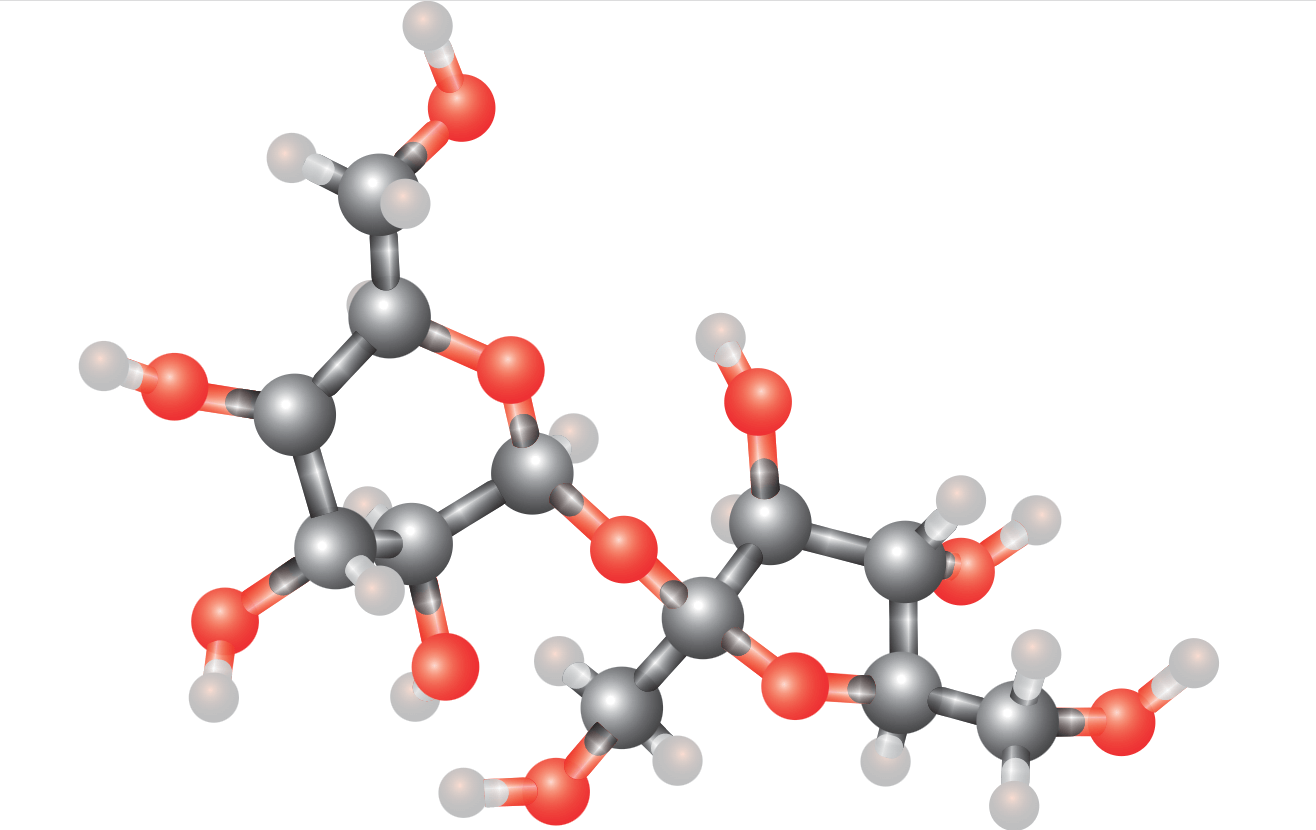What is the structure and functions of Disaccharides? Information on the formulas, types and examples of Disaccharides.

Source : wikipedia.org
Disaccharides; Disaccharides are sugar molecules which are formed when two monosaccharides (hexoses) combine chemically by eliminating a water molecule. This type of reaction is called dehydration synthesis.
Dehydration synthesis can be shown by the following reaction:
- Glucose + Glucose ————->>> Disaccdaride + water
- C6H12O6 + C6H12O6 ————–>>> C12H22O11 + H2O
In dehydration synthesis, hydrogen is removed from one monosaccharide molecule, hydroxide from the other monosaccharide molecule, and finally water is formed. At the same time, the remainders of the monosaccharide molecules are joined together forming a larger molecule. The (C-O-C) bond that joins two monosaccharides is called a glucoside bond.
In dehydration synthesis, the number of glucoside bonds is equal to the number of water molecules formed, and is one less than the number of monosaccharides which have joined.
The reverse of dehydration is hydrolysis, which is defined as the reaction of breaking down processes.
Disaccharides are less soluble in water and less sweet when compared to monosaccharides. They cannot be used by organisms directly. First they are broken down into their subunits by hydrolysis reactions, and then taken into the celi and used in metabolic reactions involving energy release.
The important disaccharides found in organisms are maltose, sucrose and lactose. These double sugars are also isomers with the formula of C12H22O11
Maltose: Maltose, also called malt sugar, is synthesized from two glucose molecules by dehydration synthesis. It’s present in many seeds asa stored carbohydrate.
- Glucose + Glucose ——–> Maltose + Water
- C6H12O6 + C6H12O6————-> C12H22O11 + H2O
Sucrose: Sucrose, also called table sugar or saccharose, is formed from glucose and fructose by dehydration synthesis.
- Glucose + Fructose ————-> Sucrose + Water
- C6H12O6 + C6H12O6————-> C12H22O11 + H2O
It is the common sugar of household, and occurs in numerous plants particularly, the sugar cane and the sugar beet.
Lactose: Lactose, also knovvn as milk sugar, is synthesized from a glucose molecule and a galactose molecule.
- Glucose + Galactose ——————-> C12H22O11 + Water
- C6H12O6 + C6H12O6————-> C12H22O11 + H2O
Lactose is one of the sugars found most commonly in human diets. It constitutes about 5 percent of the milk of all mammals.